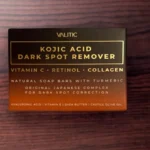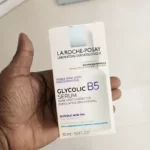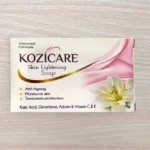Now Reading: My Honest Review of Geisha White Skin Brightening Soap (2025)
-
01
My Honest Review of Geisha White Skin Brightening Soap (2025)
My Honest Review of Geisha White Skin Brightening Soap (2025)

This post may contain affiliate links. Please read our full disclosure here.
When I first came across the Geisha White Skin Brightening Bar Soap, I was intrigued by its bold claims of visible skin brightening in as little as seven days. Having tried various brightening soaps in the past, I wanted to see how this one compared. This bar soap is clearly marketed not as a gentle everyday cleanser but as a targeted treatment for issues like dark spots, acne marks, and uneven skin tone. In this review, I’ll share my personal experience with its packaging, ingredients, scent, lather, application process, effectiveness, size, brand reputation, price, and availability, as well as a few details I found while researching that helped me use it more effectively.
Packaging
The first thing that stood out to me was the packaging. The soap is usually sold in multi-packs of two or three individually wrapped 65g bars, housed in a secondary paperboard box or plastic overwrap. Each bar is tightly sealed, which I appreciated from a hygiene standpoint. The design is bold, with the Geisha White name prominently displayed alongside descriptors like “Classic,” “Intense,” or “Skin Brightening.” This makes it clear which variant you’re buying, but it can also be a bit confusing because there are several similarly named options. While the packaging has a clean and functional look, it doesn’t give off a luxury vibe. It feels more like a cosmeceutical product than a pampering beauty bar. The orange color of the soap itself reinforces the brightening claims, and even though the packaging is opaque, the bar’s color signals its purpose. I also appreciated that the expiration date and a 12‑month Period After Opening (PAO) were printed right on the packaging — a detail often overlooked but very helpful when you’re trying to track product safety.
Ingredients
The formulation is a mix of natural oils and powerful actives. The base is primarily refined coconut oil, which gives the bar its hardness and rich lather. It’s also enhanced with natural extracts like papaya, carrot, and banana to give it a more natural appeal. But the real star here is kojic acid, a well-known melanin inhibitor that helps lighten dark spots and even out skin tone. Some variants also contain niacinamide (Vitamin B3) and collagen for added skin benefits, and exfoliants like papaya enzyme or lactic acid to speed up cell turnover. It’s worth noting that while the brand claims the soap is non-comedogenic, coconut oil has a high comedogenic rating, which may not suit everyone prone to breakouts. The soap also has an inherently alkaline pH, which can lead to dryness if you’re not careful. I quickly learned to use it as instructed, applying moisturizer afterward to offset any tightness.

Scent
The scent of this soap isn’t its main selling point, but it’s pleasant enough. The Classic variant has a light, refreshing fragrance that lingers faintly after rinsing. Some versions with papaya extract give off a subtle fruity note, while others lean more towards a perfumey or citrus-like aroma. It’s a clean smell, nothing overwhelming, and it complements the soap’s treatment-focused identity. Compared to mainstream soaps that emphasize indulgent scents, this one keeps the fragrance minimal, which suits its functional nature. Personally, I found the mild papaya scent comforting because it reminded me of other Philippine soaps I’ve used before.
Lather and Application
Using this soap felt more like following a skincare routine than just washing up. I started by wetting my skin with lukewarm water, then working the bar into a creamy, rich lather between my hands. The coconut oil base makes it foam quickly. The instructions recommend leaving the lather on your skin for a set time—about one minute on the face and up to three minutes on the body—to allow the active ingredients to penetrate. I began cautiously with shorter contact times (around 30 seconds) to see how my skin would react before working up to the full duration. After rinsing thoroughly, I always applied moisturizer and, during the day, sunscreen with at least SPF 30, as directed. This extra care is essential because kojic acid can increase your skin’s sensitivity to the sun. I appreciated that the product’s own instructions acknowledged this and recommended SPF — it signaled to me that the brand understood both the power and risks of its ingredients.
Effectiveness
The soap markets itself as being “clinically proven” to brighten skin in as fast as seven days. While I didn’t see dramatic changes within a week, I did notice a subtle improvement in skin tone and texture after consistent use. Over several weeks, my dark spots began to lighten gradually, especially on areas like my arms where I have some sun damage. The soap also gave my skin a smoother feel thanks to its gentle exfoliating action. However, it did leave my skin a bit dry if I didn’t follow up with moisturizer, which confirms its efficacy-first, comfort-second approach. I also appreciated its antibacterial benefits, which seemed to help keep small breakouts at bay. That said, it’s definitely a potent product—if you have sensitive skin, you’ll want to build tolerance slowly. From my experience, the combination of patience and proper aftercare paid off with visible results.
Size and Lifespan
The standard bar weighs 65g, which is small enough to handle easily yet big enough to last me about three weeks with daily use on both my face and body. It’s usually sold in multi-packs, offering good value if you plan on using it consistently. Like most bar soaps, its longevity depends on how you store it—keeping it in a dry soap dish away from direct water streams helps it last significantly longer. For frequent travelers, the individually wrapped 65g bars are also very convenient.

Brand Reputation
One thing I quickly learned is that the “Geisha” name is used by different companies in different countries. The version I tried is made in the Philippines by Geisha White Company, which the brand says holds FDA registration for some of its products. However, not all variants appear to have the same regulatory status, and I even found a public health advisory in the Philippines about their “Intense” variant that was officially issued by fda.gov.ph in 2024.
This fragmented brand identity can be confusing. In Africa, for example, Unilever sells a completely different “Geisha” soap aimed at families, and in the U.S. Mitchell Brands markets yet another Geisha Kojic Acid Soap. This overlapping use of the name makes brand recognition tricky and can make it harder for consumers to know which version they’re buying. For me, it meant doing some extra research to ensure authenticity—I even checked the seller’s credentials and product origin before purchasing online.
Price and Value
In the Philippines, this soap is very affordable. At Watsons, a two-pack of 65g bars costs roughly ₱75.00 (about $1.28 USD)—a real bargain for what you’re getting. But once you look at international sellers, the price skyrockets. In the U.S., I saw a three-pack listed for around $12.95, and on eBay some sellers were charging as much as $26.99 for the same size. Clearly, the price reflects not just the product but also the cost of importing and the trust it holds within diaspora communities. If you’re in the Philippines, it’s a low-cost treatment option. If you’re abroad, it becomes a premium purchase. I personally stocked up while traveling, which saved me quite a bit.
Availability
In its home country, the soap is easy to find at major retailers like Watsons, Shopee.ph, and Lazada. Outside of the Philippines, you won’t find it at mainstream stores but rather through niche online retailers and specialty shops catering to Filipino communities—sites like “Sukli” or “Pinay Glow”—as well as third-party sellers on platforms like eBay. Many U.S.-based sellers advertise “authentic stock from the Philippines” with fast domestic shipping, which makes it more convenient for international buyers despite the markup.
Overall Rating
After several weeks of use, I would rate the Geisha White Skin Brightening Bar Soap at 7.7 out of 10. It delivers on its promise of gradual brightening and smoother skin, but it requires careful use and good aftercare to avoid dryness and irritation. For me, it’s more of a treatment product than a daily soap. If you’re looking for a powerful, affordable brightening bar and you’re willing to follow the regimen and take precautions like moisturizing and sunscreen, this soap can be an effective addition to your skincare routine. If you’re sensitive or prefer something mild and indulgent, it may not be the best fit.
In summary, this is a highly targeted, results-driven bar soap that works best for those who prioritize efficacy over comfort. With consistent use and proper aftercare, it can visibly improve the appearance of dark spots and uneven skin tone, but be aware of its potential downsides and the complexities of its brand identity before you buy. My own journey with it taught me that a little research and patience go a long way toward getting the best out of this potent little bar.
Geisha White Skin Brightening Soap
- Potent active ingredients like kojic acid and niacinamide that target dark spots and uneven skin tone.
- Affordable in the Philippines, especially when bought in multi-packs.
- Pleasant but mild fragrance.
- Clear instructions and a structured application routine.
- Multiple sizes available, including a convenient larger bar.
- Can be drying without proper post-use moisturizing.
- High comedogenic base ingredient may not suit acne-prone skin.
- Fragmented brand identity and inconsistent regulatory status between variants.
- Significant price markup in international markets.















